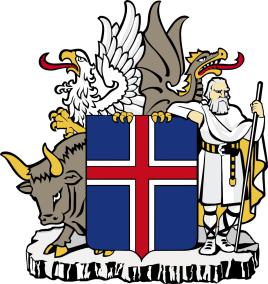

Iceland (English: Iceland; Icelandic: Ísland), an island country in northwest Europe. Near the Arctic Circle, between the Atlantic Ocean and the Greenland Sea in the Arctic Ocean. It faces Greenland in North America across the Danish Strait in the West and 805 km from Scotland in the southeast. The vast majority of the territory is located on the islands of the same name, with a total area of 103000 square kilometers, the population is about 322000 (2013), and the vast majority are Icelanders. Reykjavik, the capital, is divided into eight districts. The official language is Icelandic. It established diplomatic relations with China on December 8, 1971.
Iceland, located on the mid Atlantic ridge, is one of the most active volcanic regions in the world with 30 active volcanoes. Three fourths of the land is plateau, and there are narrow Plains along the coast. The highest peak of Mount Warner dares is 2119 meters above sea level, 5% of the island area of the glacier. Due to the coexistence of glaciers and volcanoes, which is called "the country of ice and fire". The northern part has a cold tundra climate; the south part has a temperate marine climate, with annual precipitation of 2000 mm on the south bank and 450 mm on the north bank. Aurora often appear in autumn and winter. Geothermal and hydraulic resources are abundant. There are sulfur, lignite, bauxite and other mineral deposits.
At the end of the 8th century, the Irish and Norwegians moved to Iceland. The Icelandic Federation was established in 930. It belonged to Norway in 1262 and Denmark in 1380. It became independent in 1918 and the Republic of Iceland was established on June 17, 1944. Limited by natural conditions, the territory has a small population, which is one of the countries with the lowest population density in the world. Limited by natural conditions, the territory has a small population, which is one of the countries with the lowest population density in the world. 85.5% of the residents believed in Lutheran. Iceland's most famous cultural heritage is the classical literature "Sakya Iceland".
